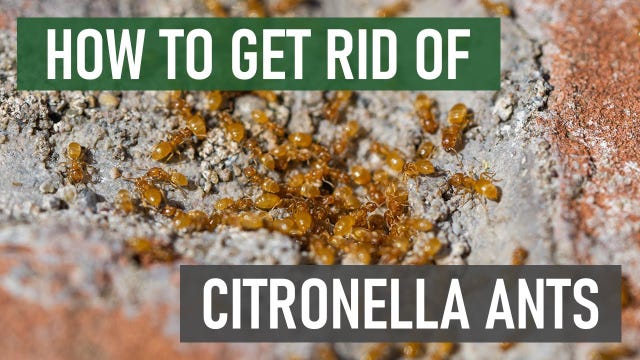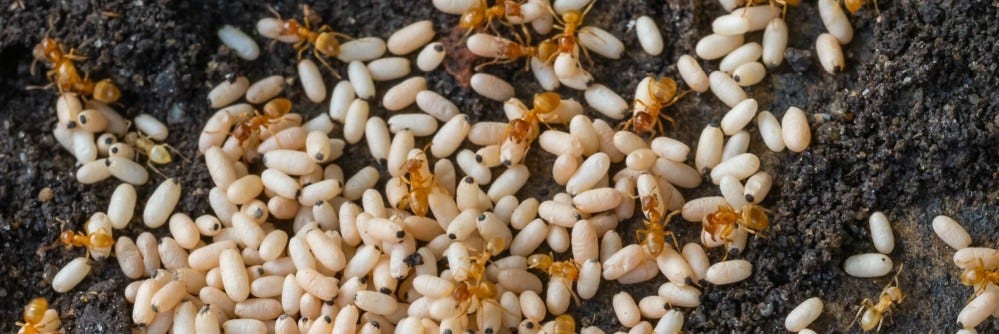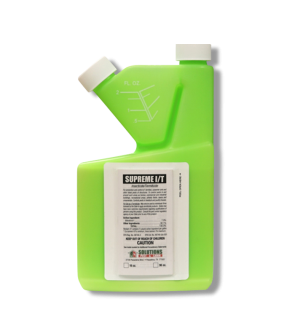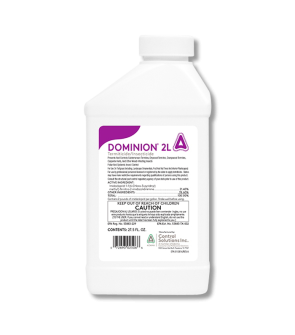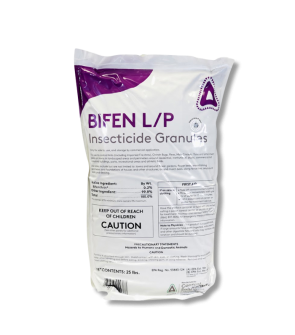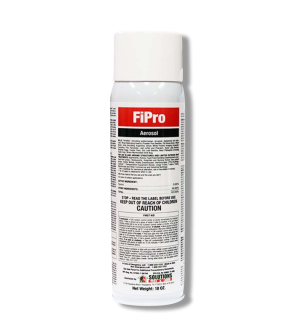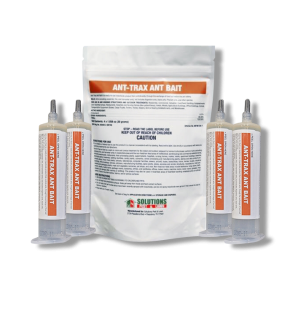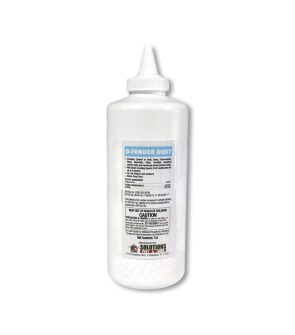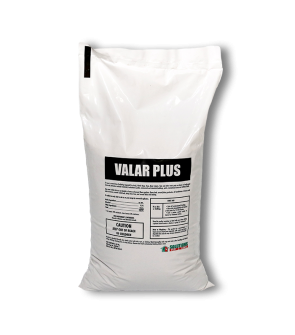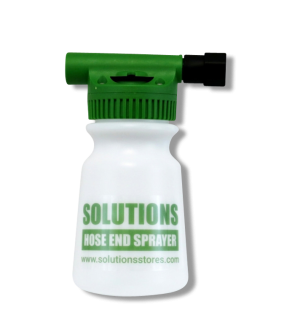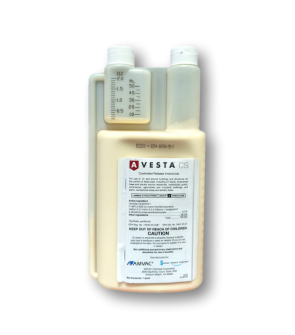Gain access to personalized product screening, the best pricing, rewards, and more!
Most Effective Products
Citronella Ant Control: How To Get Rid of Citronella Ants
This page is a citronella ant control guide. By using the suggested products and methods, you will reduce the likelihood of citronella ants. Follow this guide and use the recommended products, and we guarantee a great reduction in the population of citronella ants.
An ant species that has been making headlines in recent years is the citronella ant. These ants include the larger yellow ant, Lasius interjects, and the smaller yellow ant, Lasius claviger. As their name suggests, the citronella ant is very small, at 2 millimeters long. Still, it can cause big problems by rapidly breeding and forming supercolonies with gigantic ant populations.
Citronella ants first appeared in the states, particularly in Florida, in early 2017. By mid-2017, the population had increased tenfold, and they began dominating the area of South Florida, which researchers believe was due to the aftermath of Hurricane Irma.
Citronella ants can invade homes and backyards and be extremely prolific in displacing other ant species from properties. While they have only been discovered in Florida, they could become a pest that will generate problems for homeowners across the southern US in the coming years.
Unlike other ant species, citronella ants will not cause any damage to your home or other structures. They also do not threaten you or your pets since citronella ants cannot sting. However, citronella ants will swarm indoors in areas containing high moisture, which could lead to contaminated food products. The presence of citronella ants indoors often indicates a moisture problem, leading to other pest infestations in the future.
If you have discovered an infestation of citronella ants on your property, this DIY guide will provide information about the pest and explain how to effectively eliminate the invasion using our techniques and professional products.
Identification
Before you can proceed with treatment, you must ensure you're dealing with citronella ant. Misidentification can lead to using the wrong treatment products, which is a waste of time and money. Below, we have shared some traits, so you know what citronella ants look like for easy identification.
- Citronella ants are native to Madagascar. They are about 1/4 of an inch in length and yellow to light brown in color.
- Their bodies comprise three segments: the head, thorax, and abdomen.
- The eyes of citronella ants are compound and usually very small in proportion to their head size and when compared to other ant species.
- When crushed or treated, these pests will release a lemon scent, hence their name.
- Citronella ants have a rounded head, and their antennae have eleven segments.
- Citronella ants feed on flower nectar and honeydew that plant insects create.
- They can be found both indoors and outdoors. The incredible thing about citronella ants is that they can create colonies or nests in small secluded areas like potted plants, underneath wood and rocks, besides home foundations, inside crawl spaces, twigs, dead branches, and on small vegetation in the yard.
Use the image and description above to help you properly identify citronella ants on your property. If you are still unsure, you can contact us, and one of our pros will try to identify the species for you.
Inspection
Once the ant has been properly identified as a citronella ant, you will need to know the areas that citronella ants are invading by performing an inspection. During the inspection, you will focus on finding these areas where citronella ants are found in your home.
Where To Inspect
Citronella ants are widely distributed throughout the United States and are known to be active from early spring through October, with peak activity during the summer months. Start your inspection indoors around entry points and areas containing moisture problems, such as leaky faucets, broken pipes, or any sources of standing water.
Search in your yard, in vegetation and decaying wood. Inspect branches, twigs, woodpiles, yard debris, bricks, rocks, and logs. Also, inspect your potted plants, ornamentals, and cracks in the pavement. Indoors search cracks and crevices, kitchens, bathrooms, countertops, and where food sources are available.
What To Look For
You're searching for citronella ants and their foraging trails. Search inside the home and outside for their foraging trails. As nocturnal pests, these ants have been shown to feed exclusively on honeydew-secreting insects like aphids, mealybugs, or other scale insects during the night so that you might find their foraging trails near plants and shrubbery both indoors and outdoors.
Indoors search in cracks and crevices and the places mentioned above. Once you have determined their foraging trails (and followed them back to the possible nest or colony), you will focus on your treatment applications.
Treatment
Once you have confirmed citronella ant activity, it is time to begin treatment. Remember to read all product labels, follow the application instructions on these labels, and stay safe by wearing personal protective equipment (PPE).
Depending on the severity of the citronella ant infestation, you may need to use more than one product. We recommend applying an outdoor treatment of Valar Plus Bifenthrin Granules and Dominion 2L and an indoor treatment of Ant-Trax Ant Bait and Fipro Foaming Aerosol.
Step 1: Outdoor Treatment with Valar Plus Bifenthrin Granules
Valar Plus Bifenthrin Granules are a granular insecticide labeled to treat many different ant species, including citronella ants. They have a residual effect that can last up to three months and can be applied broadcast over your entire yard or directly to ant mounds.
Applying 2.3 pounds of Valar Plus Bifenthrin Granules per 1,000 square feet of lawn using a hand or broadcast spreader. Spread the product in flower beds, around trees, and places where you have noticed ant activity.
If you have found a mound, spot treats with 1/2 cup of Valar Plus Bifenthrin Granules directly on the mound and then water it in. Make sure to water your lawn after applying the product to activate it.
Step 2: Spray Dominion 2L around the Yard and Perimeter
Dominion 2L is a liquid insecticide labeled for treating ants. It contains imidacloprid 21.4%, which will impede the ants' nervous system and cause death.
To apply Dominion 2L, mix it with water in a handheld pump or hose-end sprayer.
Add 0.3 to 0.6 ounces of Dominion 2L in a gallon of water per 1,000 sq. ft.
Measure the square footage of your lawn to determine how much Dominion 2L you need to cover the entire area. To find the square footage, measure the length and width of the treatment area in feet, then multiply them together (length X width = square footage).
Shake well and pump your sprayer.
Broadcast the Dominion 2L mixture to activate the Valar Plus Bifenthrin Granules and spray your yard and garden instead of spot-treating. Use a fan spray setting to get nice uniform coverage.
Next, you should spray a perimeter treatment of Dominion 2L around the outside of your home and structure to create a barrier that will keep pests out. Spray around doors and windows, around the foundation going up 2 or 3 feet, and then spray any other possible entry points.
Step 3: Indoor Treatment with Ant-Trax Ant Bait
Ant-Trax is a sweet ant bait that ants can't resist. It works slowly, allowing the ants to carry the bait back to the colony, where extermination of the whole colony occurs. This product comes in a syringe for easy application.
Apply a pea-sized drop in places of high citronella ant activity and separate each placement by at least one foot.
Apply on countertops, in kitchens, bathrooms, and wherever you have noticed citronella ant activity.
Do not kill the ants or clean (or use cleaning supplies) the areas where Ant-Trax was applied for at least 7 to 10 days. The point is to let the ants feed on the bait and carry it back to the nest. Let the ants feed on the product for at least two weeks.
Step 4: Treat cracks and crevices with Fipro Aerosol
Fipro is a foaming aerosol that contains the lethal active ingredient Fipronil. It will kill citronella ants quickly, and its foaming capabilities allow insecticide to reach the ants in the tightest of hiding spots.
First, shake the can thoroughly, then push the included applicator straw into the nozzle. Spray along the lengths of cracks and crevices where ants have been noticed to travel and allow the foam to expand. In voids, spray long enough for the product to expand and cover the entire surface area. After application, hold the can in place for 8 seconds to allow the product in the straw to dispense into the treatment area.
Prevention
Once you have successfully eliminated the citronella ants infestation, you must ensure they don't reinvade. To obtain full control of citronella ants, you need to modify your environment to make it less suitable for ants to survive. Here are some preventative measures to take:
- Start by removing yard debris (especially decaying wood) like dead branches, woodpiles, lumber, logs, rocks, bricks, and general clutter. This will reduce possible harborage and nesting areas. You can remove these debris.
- Address moisture issues such as plumbing leaks, dampness, and other areas containing water. Fix leaky pipes, faulty air conditions, and other flooded areas.
- Trim back vegetation away from your property (this includes overhanging branches that touch the roof), like ground cover, weeds, and grass, to make it harder for citronella ants to enter the structure.
- Seal any cracks and crevices inside and outside your home with caulk and copper mesh. This will prevent citronella ants or other invasive pests from entering your structure or home.
- Spray Dominion 2L every 3 months outside your structure to maintain an insecticidal barrier that repels and kills insects before they can get inside.
Key Takeaways
What are Citronella Ants?
- Citronella ants are a tropical species known for being invasive. They create large supercolonies and push out native insect species where they are established.
How To Get Rid of Citronella Ants
- We recommend treating citronella ant infestations with a combination of indoor (Ant-Trax Ant Bait and Fipro Aerosol) and Outdoor (Dominion 2L and Valar Plus Bifenthrin Granules) treatment products.
Preventing Citronella Ant Reinfestation
- Reduce yard debris and clutter, trim vegetation, and apply preventative barrier treatments of Dominion 2L Insecticide to prevent citronella ant re-infestation.






